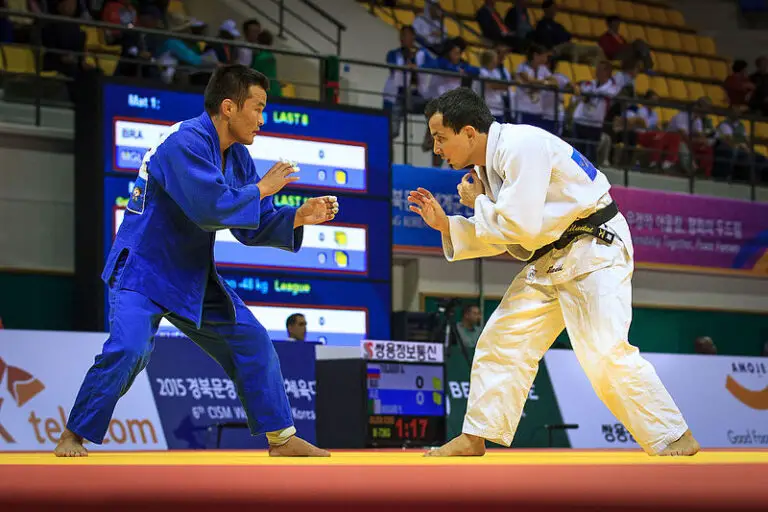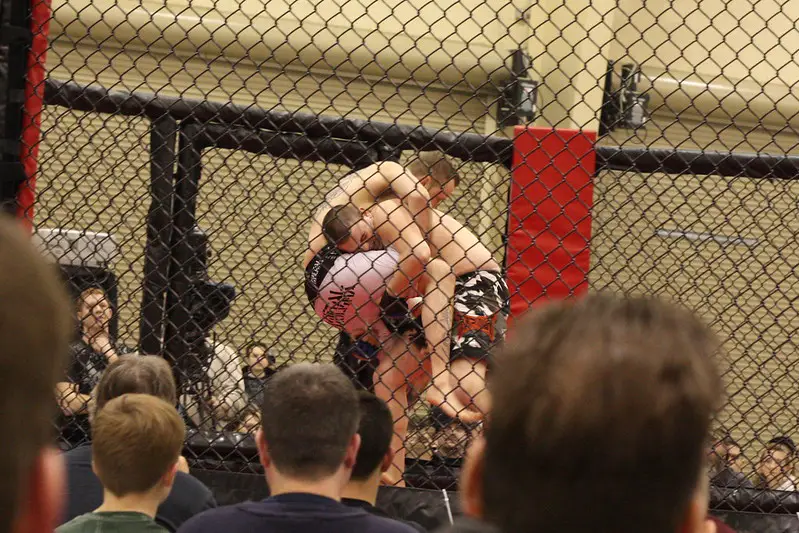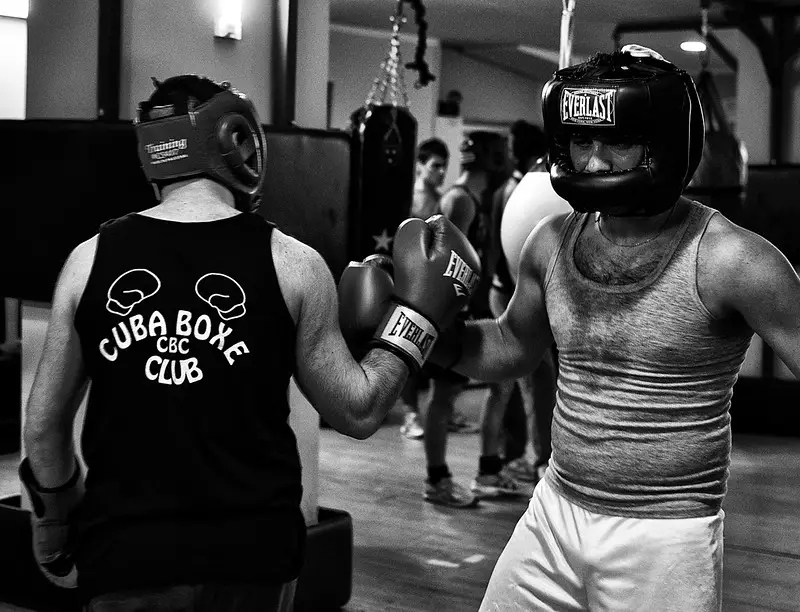In this article, you will discover the best martial arts without striking. The following combat systems primarily focus on grappling and do not include any punches to the head or kicks.
The list also includes martial arts that teach striking motion but do not include any sparring or competition.
Brazilian Jiu-Jitsu (BJJ)
BJJ is a martial art that focuses solely on grappling. There is no striking at all as it all revolves around takedowns and ground fighting. The key is to take the opponent down and submit them using chokes and joint locks. It is playful, safe, and effective for self-defense.
On the feet, practitioners learn takedowns, throws and trips. On the ground, there are positions, chokes and joint locks to neutralize the opponent. There are two main styles: Gi (with uniform) and no gi (without uniform). Both are equally effective.
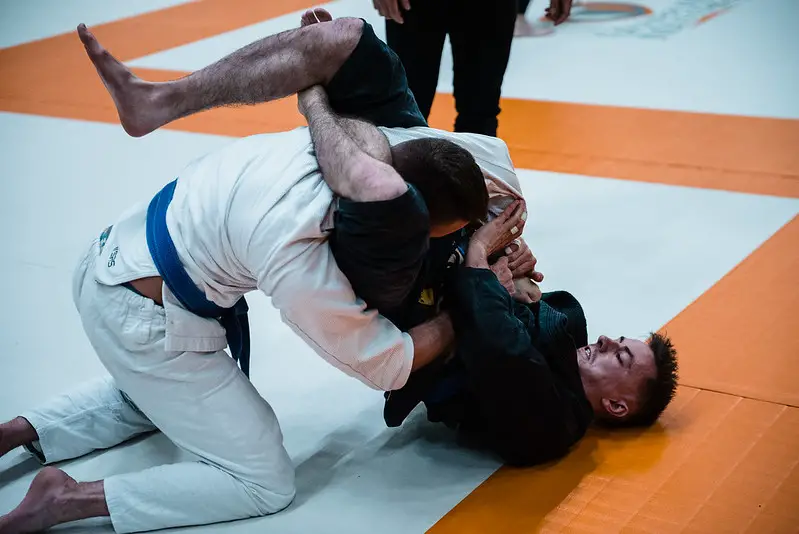
Above all, BJJ is among the most effective combat systems. It plays a key role in modern MMA and self-defense training.
A lot of fights involve grabbing, pulling, and falling to the ground where BJJ has the advantage. The other key advantage is the fact that most people don’t know how to grapple.
Since there is no striking, BJJ is also safer than most other martial arts. Unlike in wrestling or judo, there are not as many hard falls so the injury rate is even lower.
Judo
Judo originates from Japan. Jigoro Kano developed it in the late 19th century as a safer variation of Jujutsu. The system embraces sports competition, and there is no striking. It all revolves around powerful throws, and ground control using pins and holds.
Judo translates to “gentle way,”. This reflects its emphasis on using an opponent’s energy to achieve victory. However, it is a hard style that involves a lot of sparring, making Judo practical for self-defence and real combat.
The system focuses primarily on powerful throws and takedowns. The key is to off-balance the attacker and take them down to the ground. Once there, the objective is to secure a pin, hold or submission.
Each exchange begins on the feet where the main goal is to secure a strong grip. Next comes the positioning and throwing the opponent off balance to take them down. Once there, the focus switches to pins, holds and submissions.
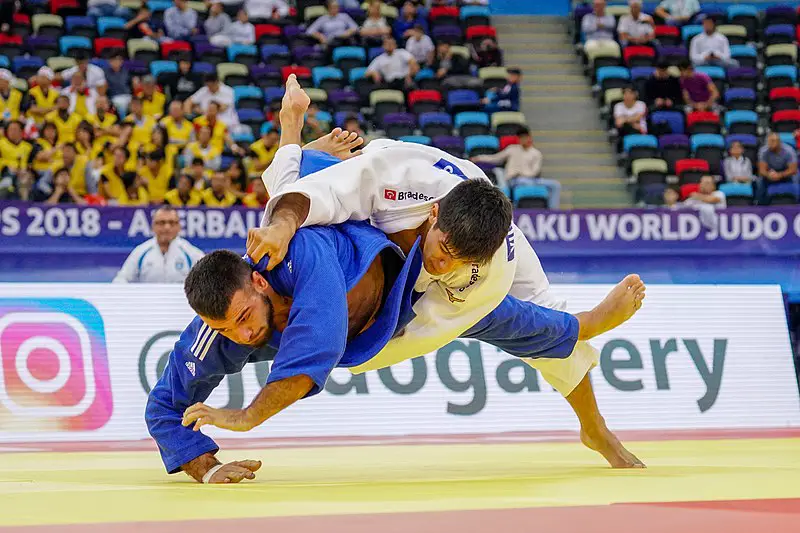
These movements are not reliant on physical strength but instead leverage an opponent’s force against them. On top of that, Judo is an Olympic sport that has a strong community worldwide.
Wrestling
Wrestling is among the oldest forms of combat that focuses on takedowns and pins. Like most other grappling arts, it emphasizes leverage, strength, technique and balance. The emphasis on mastering these basics allows wrestlers to dictate the pace of a match.
There are dozens of different styles. However, the two most popular are Greco-Roman and Freestyle. Both were included in the Olympics.
Based on the style, wrestlers manipulate the joints above and below the waist to get takedowns. This includes techniques such as single and double takedown, different throws and trips. The key is to take an opponent down and pin both of their shoulders to the mat.
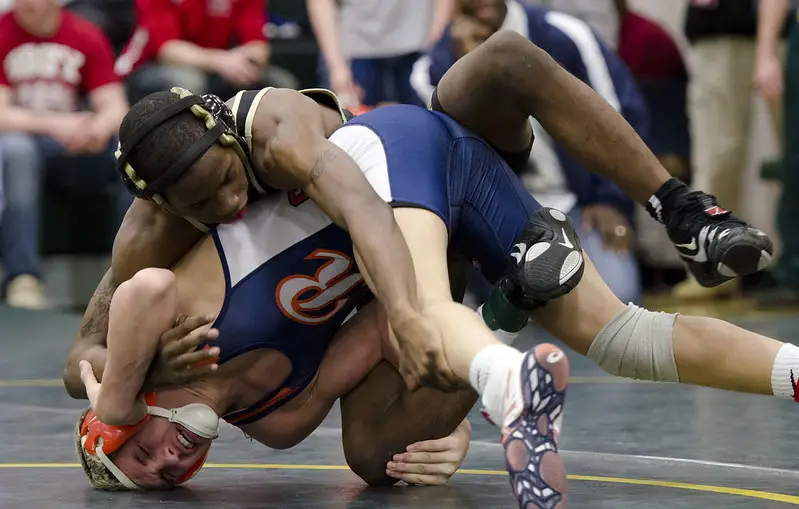
Wrestling not only provides practical self-defense skills but also fosters discipline and resilience. The sport’s rigorous training instils physical fitness, mental toughness, and strategic thinking.
Sambo
Sambo stands out as a dynamic martial art with roots in judo and wrestling. Developed for the Soviet Red Army in the early 1920s, Sambo is a mix of different arts.
There are two styles: Combat Sambo and Sports Sambo. While combat includes striking, Sambo is grappling-based and there is no striking.
In Sambo, practitioners learn to adapt to various scenarios. The goal is to secure a takedown using explosive attacks and submit the opponent using different submissions. The most common ones are leg locks.
Unlike other arts, Sambo emphasizes aggression and fast pace fighting. Practitioners learn how to attack using explosive moves, and always chase a finish. Though hard, this approach makes Sambo practical in real combat.
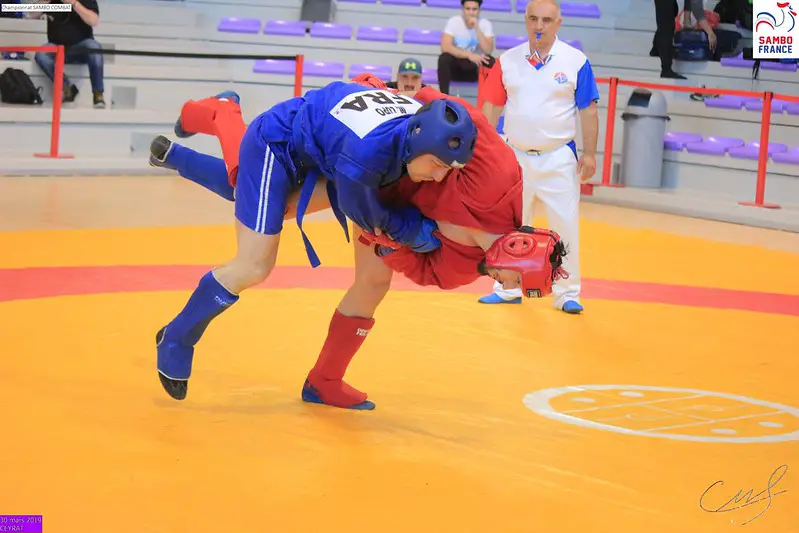
The other good thing is that you can always switch to Combat style if you want to learn how to strike.
The only major downside is the accessibility. Sambo is not that popular outside Russia and other former Soviet republics.
Submission Wrestling
Submission wrestling is a hybrid grappling martial art. It combines the elements of jiu-jitsu, judo and catch wrestling into one system. It is widely regarded as the most effective grappling martial art.
This hybrid nature allows practitioners to develop all-around skills. They learn wrestling takedowns, judo trips and throws, and BJJ and jujutsu on the ground. It truly is an all-around system.
As a result, submission wrestling has become popular with the rise of MMA. Most MMA fighters practice this form of wrestling to prepare for matches, which showcases its efficiency.
Aikido
Aikido is a Japanese martial art focused on the re-direction of an attack. That’s why the founder Morihei Ueshiba named it Aikido which translates to “the way of harmony with the spirit.” The main objective is to use the opponent’s force against them.
Aikido techniques involve joint locks and throws designed to re-direct the attack. Ueshiba designed these moves to outposition the attacker and throw them off balance. Thus, practitioners must learn how to perform in a flow and always adapt.
Also, this approach enables them to use these techniques against bigger opponents.
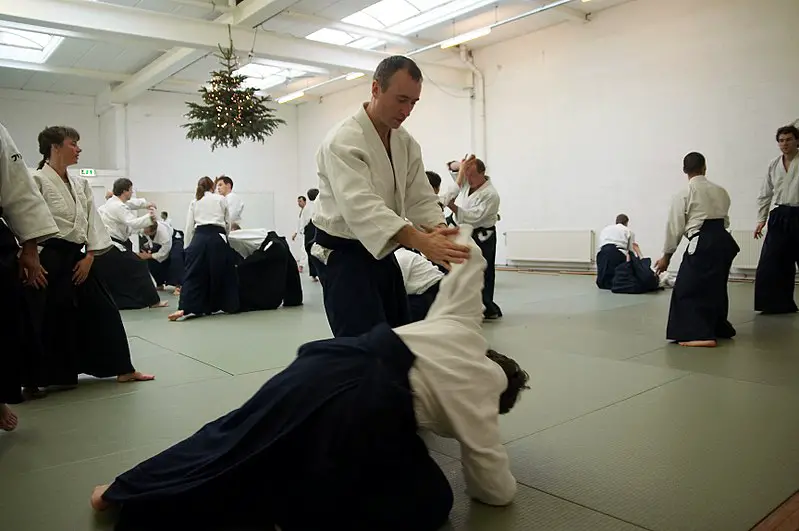
The only major issue is the effectiveness. Aikido doesn’t have realistic sparring or competition where you can test your skills. As a result, it all revolves around pre-arranged attacks that look practical. But no one guarantees you this will work in real life.
Aikido training includes the principles of harmony and balance. The learning syllabus involves breathing exercises and meditation aimed at improving mindfulness. Practitioners learn how to stay calm and resolve conflicts without aggression.
Tai Chi
Tai Chi is a gentle martial art from China. It’s not about fighting like other martial arts. Instead, it’s more like a moving meditation. People who do Tai Chi move slowly and smoothly, which helps them relax and feel more balanced.
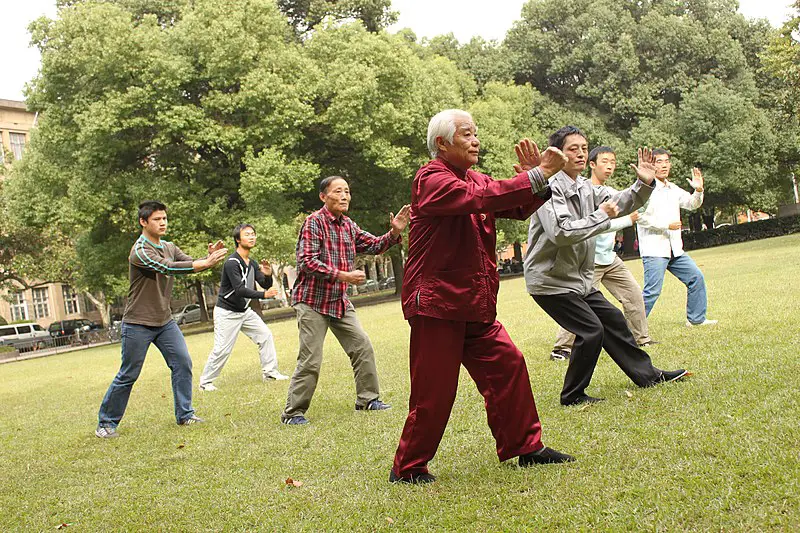
The idea behind Tai Chi is to work on improving yourself from the inside, making your mind and body work together better. Even though it doesn’t look like a regular fighting technique, Tai Chi teaches you to be soft yet strong, and how to work with energy in a peaceful way. It’s great for people of all ages because it makes you healthier both in your body and your mind.
On paper, it includes striking with hands and legs. However, there is no sparring so you won’t use it against other people.
Capoeira
Capoeira comes from Brazil and is a mix of martial art, dance, and acrobatics. It was created by African slaves as a way to keep their fighting skills alive without their masters knowing. Capoeira is known for its cool moves, like kicks and flips, all done to music.
When people do Capoeira, they form a circle and take turns showing off their moves. They try to outsmart each other without actually hitting. It’s all about flowing with the rhythm and using your body in creative ways.
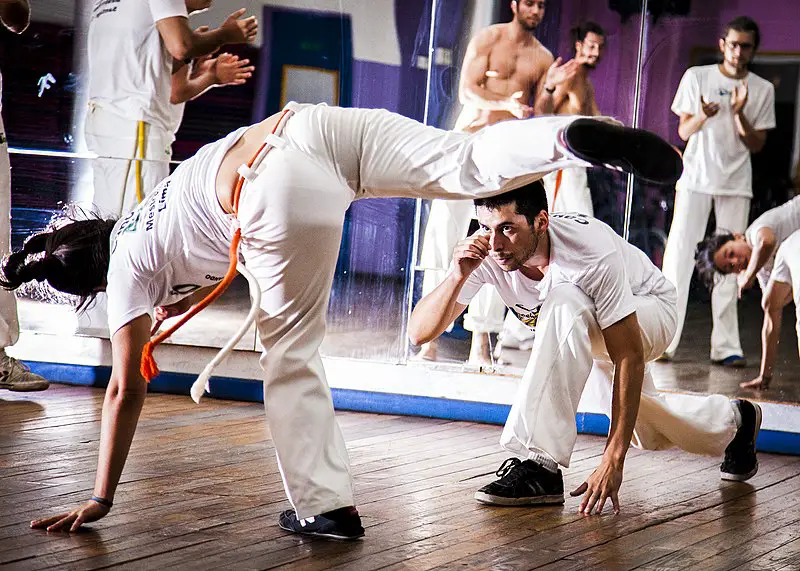
Capoeira isn’t just about fighting. It is also about having fun, making friends, and keeping an important part of culture alive. It’s a very lively and social way to get in shape and learn about history at the same time.
How To Overcome The Fear of Sparring?
Overcoming the fear of sparring in martial arts or combat sports can be challenging, but it’s certainly achievable with patience, practice, and the right mindset. Here are some strategies to help you conquer your fear from our detailed article on how to overcome the fear of sparring:
How To Overcome The Fear of Sparring?
- Understand the Fear. Recognize that fear is a natural response, especially when engaging in activities that involve physical contact or competition. Understanding the source of your fear can help you address it more effectively.
- Start Slowly. Begin by gradually exposing yourself to sparring in a controlled environment. Start with light or no-contact drills to get comfortable with the movements and techniques involved.
- Build Confidence. Work on improving your skills and knowledge of the sport through consistent practice. The more confident you feel in your abilities, the less intimidating sparring will become.
- Focus on Technique. Concentrate on perfecting your techniques rather than worrying about winning or losing. This shift in focus can help alleviate performance anxiety and allow you to stay present in the moment.
- Communicate with Your Partner. Open communication with your sparring partner is crucial. Let them know about your concerns and set boundaries if necessary. A supportive training environment can help alleviate fear and build trust.
Final Thoughts on martial Arts without striking
Striking is more natural to people and does more damage so it is closely associated with martial arts and fighting. However, grappling is equally important and this is good news for all the people looking to learn how to fight without being hit. And, it’s not always about the fear. Some people simply don’t want to have bruises all the time or are concerned about the cumulative damage of these shots.
Luckily, there are many other martial arts without striking they can train in. Some of the most popular and effective are BJJ, wrestling and Judo. If you are more into traditional training, Aikido and Tai Chi are also solid options. Whatever you choose, be sure to commit yourself to it and be consistent.
